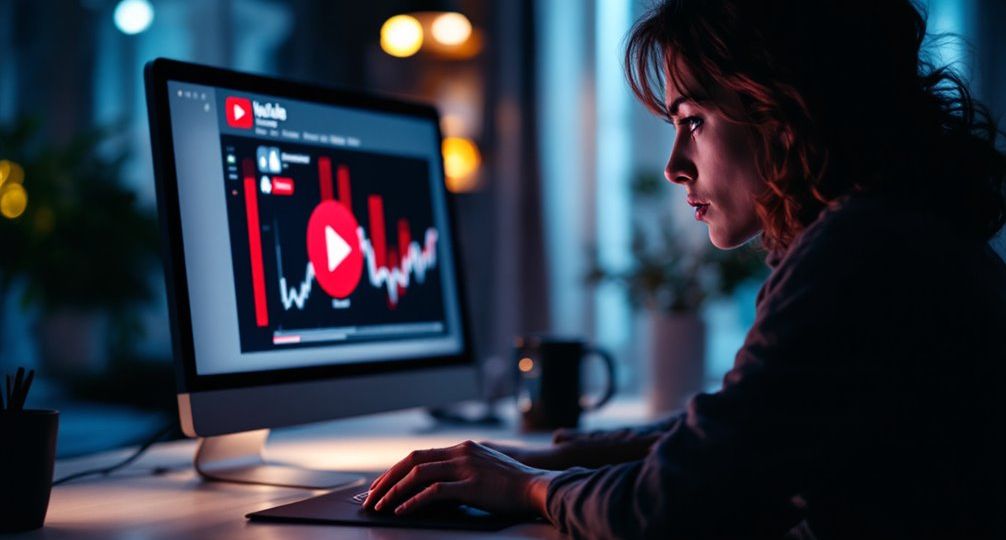
Should I delete YouTube videos with low likes?
When a video doesn’t perform as expected, you might consider it a candidate for strategic pruning. It’s crucial to weigh the potential benefits against the drawbacks of deleting YouTube videos with low likes. Eliminating underperforming content could improve your channel’s overall quality, but it risks losing valuable engagement metrics and reducing your total view count. How do you decide if the potential gains outweigh the losses? Let’s explore the intricacies of this decision.
Key Takeaways
- Deleting videos reduces total view count, affecting channel visibility and perceived popularity.
- Low-like videos can still contribute valuable engagement data for performance analysis and content improvement.
- Removing low-performing videos can refine content quality and enhance channel authority.
- Consider if videos attract the wrong audience or generate spam before deletion.
- Utilize YouTube analytics to assess metrics like watch time and audience retention before deciding to delete.
Impact on View Count
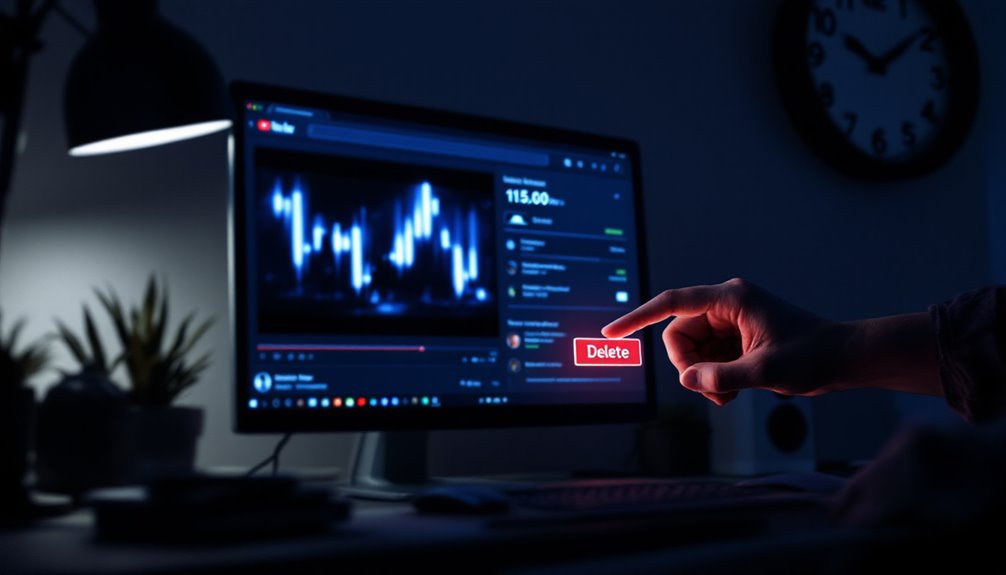
When considering whether to delete YouTube videos with low likes, it’s crucial to understand how such actions impact your channel’s view count. Deleting a video directly reduces your total view count, and this subtraction can noticeably affect perceived popularity. Even low-view videos contribute to your overall view count, so removing them, while less significant, still impacts cumulative numbers. This decline in view count implications can lead to diminished channel visibility, as fewer views may make your channel appear less engaging to potential subscribers. The resulting decrease in content availability might also influence viewer retention and attractiveness. Keep in mind, innovative content strategies should weigh these factors carefully, ensuring that decisions don’t inadvertently compromise your channel’s growth potential and visibility. Additionally, deleting a video results in the loss of all associated views, further affecting your channel’s analytics and performance metrics. Purchasing YouTube Likes can be a strategic move to enhance engagement and algorithm ranking, boosting your channel’s social proof and visibility.
Algorithm and Channel Performance
Understanding the impact of video deletion on view counts naturally leads to examining how YouTube’s algorithm interprets and influences channel performance. Algorithmic feedback is essential, as it evaluates watch time, engagement, and user interaction to tailor recommendations. Deleting underperforming videos won’t directly alter algorithmic suggestions, but it enhances your channel authority by refining content quality. This strategic move helps maintain a trustworthy profile, vital for algorithmic favor. By removing distractions, you focus on high-quality content that aligns with user interests, bolstering your channel’s topical authority. Analyzing low-performing videos can still offer insights for content improvement, ensuring your channel stays relevant and innovative. It’s generally not recommended to delete underperforming videos, as they can serve as learning tools and may gain views over time. Ultimately, maintaining a curated library strengthens your algorithmic standing and channel performance.
Audience Engagement and Retention
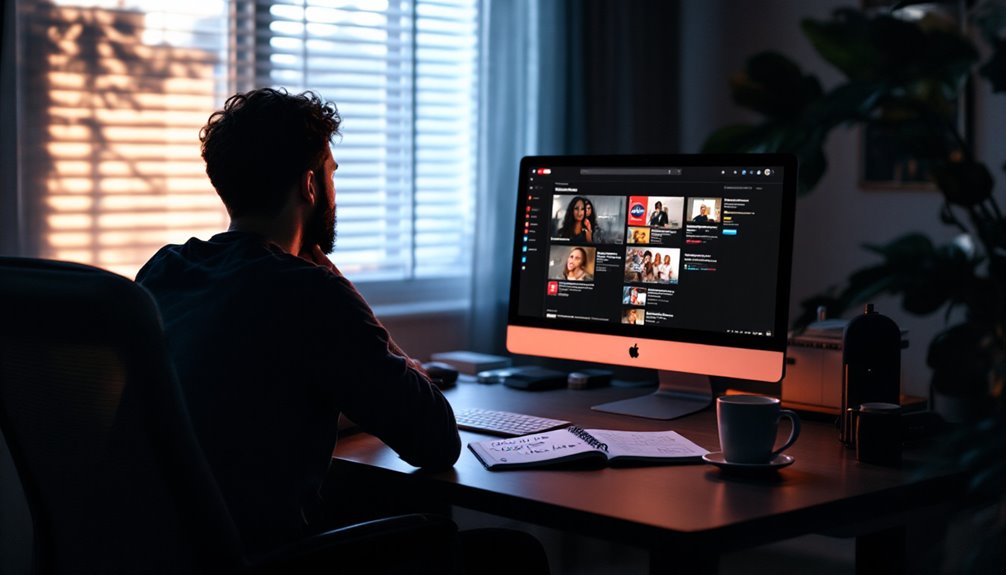
Engaging your audience is essential for retaining viewers and enhancing channel performance. Start strong by crafting intros that hook viewers within the first 15 seconds using curiosity-based questions or statements. Align your intro with the thumbnail and title to avoid misleading your audience.
Use video chapters and timestamps to cater to viewer preferences, making content easily navigable. Enhance the visual appeal with b-roll, animations, and pattern interrupts every 30 seconds to maintain interest. Implementing varied visuals such as B-roll footage and graphics can greatly enhance audience engagement.
Analyze retention data to pinpoint where viewers drop off, then adapt based on audience feedback. Encourage participation by building a community through comments and interactive content.
Community Guidelines and Removals
Curiously, why do some videos get removed from YouTube while others remain? It’s all about content policies and the removal criteria set by YouTube.
Videos must violate Community Guidelines to face removal. This includes harmful acts, challenges, pranks, or content involving weapons and illegal goods. Content that violates YouTube’s Community Guidelines can be reported through the reporting procedure.
However, educational or artistic content might be spared if it doesn’t breach other policies. The video must be clearly identifiable and realistic to qualify for removal, with public interest possibly swaying decisions.
First-time violations typically result in a warning, which can be dismissed through policy training. Repeated offenses lead to strikes, limiting channel activities.
You can appeal violations, but only once per strike, ensuring creators stay informed and compliant with guidelines.
Data and Metrics
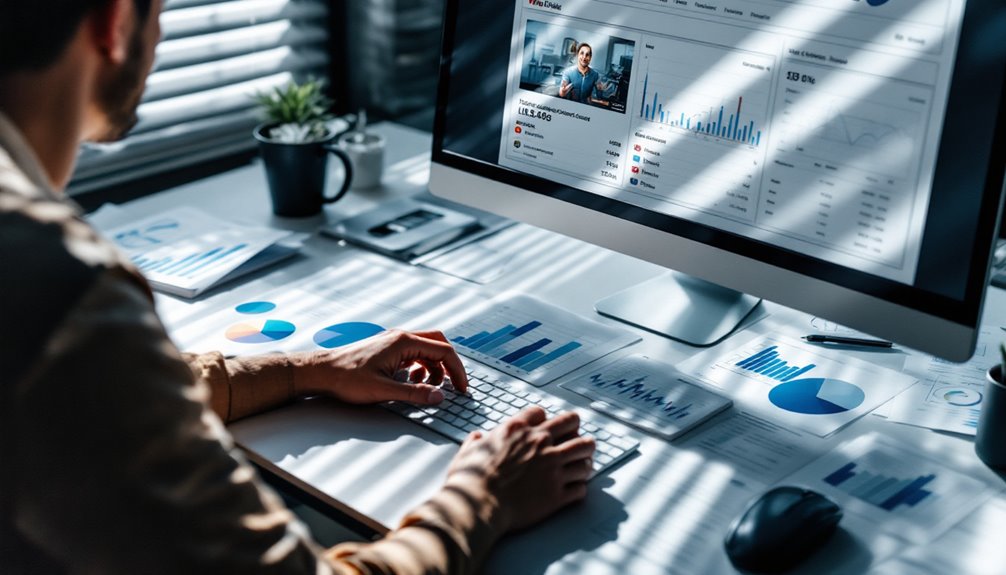
When you delete a YouTube video with low likes, you’re not just removing the content, but also permanently erasing all associated metrics. This means valuable engagement data, such as watch time and CTR, will be lost, eliminating insights into user behavior and content performance. Additionally, deleting a video can affect your channel’s share of voice, as it reduces your brand’s visibility and presence in comparison to competitors. Consider the irreversibility of this action, as there’s no method for restoring these metrics once the video is gone.
Metrics Permanently Erased
Deleting a YouTube video doesn’t just remove it from your channel; it also permanently erases essential data and metrics tied to that video. This decision impacts your metrics analysis and content strategy considerably:
- Total View Count Impact: Removing a video subtracts its views from your total channel view count, affecting perceived popularity and visibility.
- SEO Authority and Traffic: Deleting eliminates any SEO authority, causing a loss in traffic and possibly leading to broken links on external sites. Additionally, high engagement rates are favored by the algorithm for recommendations, so deleting videos with such metrics might reduce the likelihood of your other content being promoted.
- Monetization and Revenue: You lose any associated monetization, which can decrease overall channel earnings.
- Analytic Performance and Historical Data: Historical performance data, fundamental for understanding trends, is lost, hindering future metrics analysis.
Careful consideration of these factors is essential for an innovative content strategy.
Engagement Data Lost
While considering whether to delete YouTube videos with low likes, it’s crucial to understand the significant impact on engagement data and metrics. Removing a video disrupts engagement trends, diminishing viewer behavior insights critical for innovative content strategies. You lose valuable data such as watch time, likes, comments, and shares, which are pivotal for algorithmic visibility and subscriber growth. This reduction affects your channel’s perceived popularity, a key factor in attracting new viewers. Key moments of audience retention are erased, hindering your ability to optimize future content. Using YouTube analytics to analyze audience retention and identify drop-off points can help you understand viewer behavior better. Additionally, broken links harm SEO, decreasing channel discoverability. Ultimately, deleting videos can lead to fewer algorithm-driven recommendations and lower visibility for your remaining content, impacting your channel’s long-term engagement and growth.
No Metrics Restoration
Although it might seem tempting to delete YouTube videos with low likes, the irreversible loss of data and metrics should give you pause. Removing videos leads to metrics loss that can greatly impact your content strategy. Consider the following consequences:
- Total View Count Drop: Deleting a video subtracts its views, reducing your channel’s perceived popularity and affecting its visibility.
- Watch Time Impact: Eliminating videos decreases overall watch time, a critical factor for YouTube’s ranking algorithm, potentially hindering other videos’ performance.
- Algorithm Disruption: The absence of a video alters the algorithm’s learned patterns, affecting recommendations and content relevance.
- Search Visibility Decline: Deleted videos vanish from search results, decreasing your channel’s topical relevance and impacting SEO.
Innovative strategies should prioritize retaining data-rich content. One effective technique is to focus on a specific niche to maintain algorithm consistency, which helps in aligning your content with the right audience.
Strategic Content Management
To optimize your video library and enhance channel performance, use YouTube analytics to identify underperforming videos and assess whether they align with successful content themes. Pay close attention to metrics like watch time and audience retention, which are often more telling than likes alone. YouTube has over 2.6 billion monthly active users, making it a significant platform for video marketing and audience engagement.
Optimize Video Library
Optimizing your video library is essential for strategic content management, as it enhances both discoverability and viewer engagement.
Focus on video optimization and content organization to maximize your channel’s potential. Start by refining tags and metadata—broad and specific tags improve search results and categorize content for the algorithm. Understanding the YouTube algorithm is crucial, as it considers key factors like watch time and user engagement to rank videos effectively.
Utilize playlists to organize videos into cohesive collections, boosting discoverability and encouraging binge-watching.
Consider these strategic steps:
- Optimize Tags and Metadata: Use a mix of broad and specific tags to improve searchability.
- Utilize Playlists: Group related videos to enhance discoverability and SEO.
- Analyze Underperforming Videos: Use analytics to refine your strategy rather than deleting content.
- Conduct Keyword Research: Incorporate target keywords in titles and descriptions for better optimization.
Implement these tactics for a more innovative and effective video library.
Enhance Channel Performance
For enhancing your channel’s performance through strategic content management, leveraging data and analytics is crucial. Start by monitoring your click-through rate (CTR); if it’s low, consider revamping thumbnails or titles. Immerse yourself in performance analysis by tracking viewer retention to identify where viewers drop off, allowing you to fix those weak spots. Use audience insights to test and refine your content strategy, ensuring it aligns with what your viewers love. Analyze viewer demographics to understand when your content receives the most engagement and adjust accordingly. Consistency and relevancy in content strategy are favored by the algorithm, which is key to maintaining visibility. Cross-promote using cards, end screens, and playlists to increase visibility and engagement. Consistently publish relevant, evergreen content to maintain viewer interest and satisfy the YouTube algorithm, ultimately driving channel growth and success.
Best Practices for Video Deletion
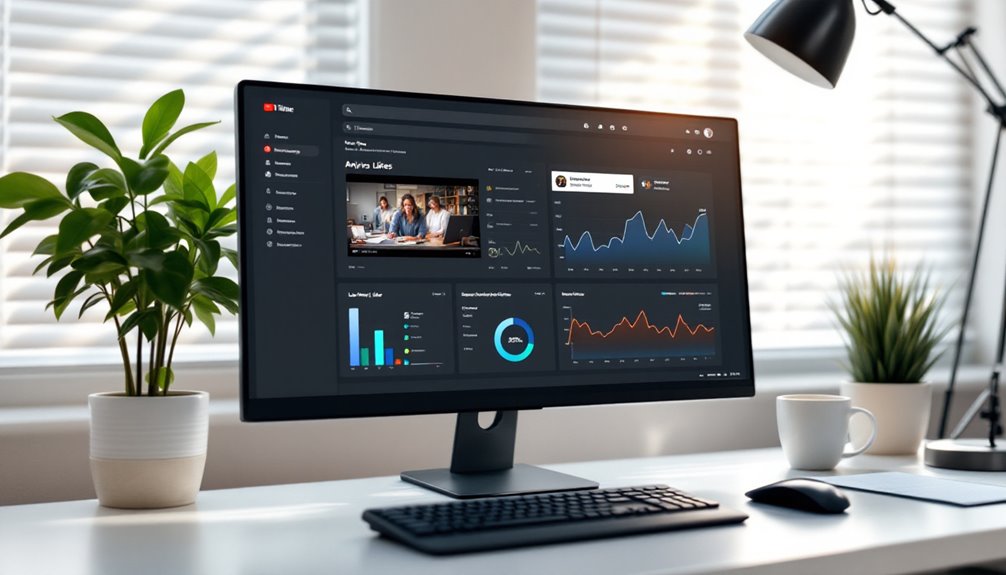
Why might you consider deleting a YouTube video? Evaluating video retention and content alignment is essential. Deleting videos can impact metrics, so weigh options carefully. Consider these factors:
- Attracting the Wrong Audience: If a video draws viewers not aligned with your target, it might skew your channel’s focus.
- Channel Pivots: Videos misaligned with new content directions can confuse your audience and dilute your brand.
- External Impact: Videos causing spam or negative attention can harm your channel’s reputation and should be reviewed.
- Monetary Considerations: Low-revenue videos misaligned with current focus are candidates for deletion, unless they offer significant income.
Innovative strategies for managing underperforming videos can maintain metrics while refining content direction.

